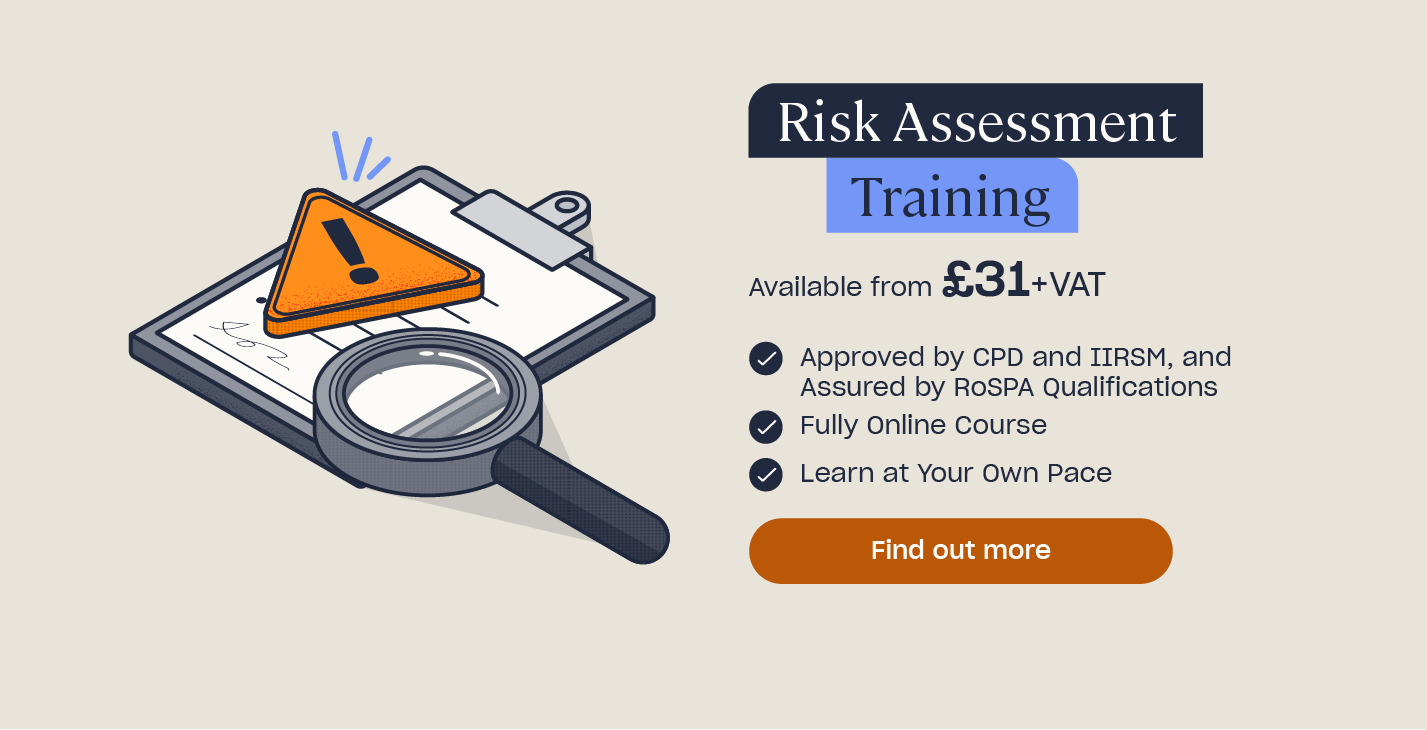What is ISO 31000 – Risk Management?
All organisations experience risks on a daily basis, some of which can be highly threatening to business and others that can present opportunities for improvement. ISO 31000 is a risk management system that enables company leaders and owners to identify these risks and better mitigate them by using a structured, recognised and effective risk management system. In this article, we’ll look at what an ISO 31000 risk management system is, how ISO 31000 benefits businesses and what’s involved in the ISO 31000 risk management framework.
What is ISO 31000?
All types of businesses, no matter their size, location or industry, encounter risks everyday. These risks can be seen as opportunities or threats depending on how they are handled.
ISO 31000 is an international standard that helps organisations to integrate risk management into their planning, governance, policies, values and culture. It gives companies a set of clear guidelines for implementing a risk-based system that is focused on identifying, evaluating, controlling, monitoring and communicating risks, and determining whether they will be threats or opportunities for the business.
The ISO 31000 framework can be used by any type of business, whether it’s a public or governmental organisation, a consultancy, a charitable organisation or a company in a heavily regulated industry. All businesses face risks of differing proportions and using the ISO 31000 guidelines can help to better identify, manage and/or mitigate these risks.
Note that ISO 31000 is not a certification, unlike many of the other ISO standards. Instead, it provides companies with a framework and set of principles that they can use to create a robust risk management system that is recognised worldwide.

Why is ISO 31000 Important?
All types of organisations need to prepare for the unexpected. ISO 31000 is important because it helps your company to predict, manage and mitigate potential risks. Other benefits of using the ISO 31000 standard include:
- A standardised risk management system – by following an internationally-recognised set of risk management principles, your system has a structured framework and standard, and recognised criteria for monitoring, review and improvement.
- A keen risk management culture – there’s a shared understanding of risks across your organisation, everyone is aware of what the risks are and the importance of managing them and all staff members, at all levels, play their part in monitoring risks.
- Proactive risk management – rather than reacting to risks as they emerge, an ISO 31000 system ensures your company is prepared and has a well-thought-out strategy to anticipate costly risks before they occur.
- Better decision making – following the guidelines means you have a strategy in place for making better, more informed decisions in terms of planning, reporting, policies, values and governance, because risk management is embedded in all aspects of the decision.
- More efficient processes – by implementing ISO 31000, your company will be able to better handle risks, allocate resources appropriately, prevent costly threats and identify potential opportunities, all of which will save – or make – your business time, money and resources.
- Enhanced stakeholder confidence – following an internationally-recognised standard shows potential clients, investors and stakeholders that your organisation takes risks seriously and has a robust risk management programme in place to handle them. This can reinforce trust and credibility.
ISO 31000 Risk Management Guidelines
ISO 31000 provides businesses with a set of principles, a framework and a process for managing risks and can be used by all types of organisations, no matter their size, industry, location or level of risk.
Note that ISO 31000 doesn’t enable you to eliminate all risks. Instead, following the principles allows you to identify, manage and/or mitigate the risks encountered.
ISO 31000 Risk Management Principles
There are 8 principles of ISO 31000 which should be used as the foundation for establishing your risk management framework. The ISO 31000 risk management principles are:
Principle 1: Integration
Risk management should be integrated into your daily business activities and not be a separate, stand-alone process. Risk management needs to be part of decision-making in all areas of the organisation and embedded into all processes, procedures, roles and responsibilities.
Principle 2: Structured and comprehensive
Risk management should be approached in a structured manner, using the framework provided, that comprehensively covers all known risks. Being systematic about risk management ensures the system is efficient and consistent, with clear procedures to follow.
Principle 3: Customised
Risk management should be customised to the organisation in question, taking into account its context. This includes the organisation’s values and culture, stakeholder relationships, legal and regulatory requirements, financial situation, technology and environment. Risk management should consider both internal and external risk factors specific to the organisation.
Principle 4: Inclusive
The creation of risk management procedures should be a collaborative approach between all key stakeholders of the organisation, including employees, customers, investors and local authorities. It’s important to gather information, knowledge and views from all parties to ensure the risk management procedures are relevant, transparent and successful. Your risk management strategy also needs to be communicated well to everyone in an easy-to-understand manner, without jargon.
Principle 5: Dynamic
Risk management must stay up-to-date with the organisation and change as the organisation changes. New risks may emerge as the environment, technology, knowledge, processes or personnel within the company evolve, and your risk management system must reflect this. You should perform an ongoing risk analysis to ensure mitigation efforts remain effective.
Principle 6: Uses best available information
Risk management needs to be based on the most current information available, whether that’s from data, observations, experiences or professional input. Your organisation will never be able anticipate all risks, so complete knowledge of everything is never going to be attainable. Instead, you must use the best information you have at the time.
Principle 7 – Considers human and cultural factors
Risk management must consider both the human and cultural factors of the people working in the organisation, as these will influence the effectiveness of risk management procedures. You need to take into account the capabilities, perceptions and attitudes of employees, as these can easily cause the risk management system to fail. For example, lack of training, not perceiving the severity of risks or not responding to risks appropriately.
Principle 8: Practices continual improvement
For a risk management system to be effective and resilient to new risks, it needs to be continually audited and improved. Daily experience of the system in action will reveal problems or sticking points that need to be amended or highlight new risks that weren’t previously considered. The ‘plan, do check, act’ cycle can help with the improvement process.

ISO 31000 Risk Management Framework
The ISO 31000 risk management framework comprises 6 key areas that aim to help you better manage and control risks. The ISO 31000 risk management framework, and how to comply with each area, is as follows:
- Leadership – all leaders in the company take risk management seriously and do their best to ensure the principles of ISO 31000 are applied to the organisation’s culture and operations. Leaders must be committed to risk management and encourage employees to be engaged and accountable.
- Integration – integration is about ensuring your risk management procedures are well integrated into daily operations and key activities, without causing unnecessary delays or setbacks to processes. Risk management must be fully embedded into the organisation and not seen as an ‘added extra’.
- Design – your risk management system should be designed based on the needs of your organisation – there is no one-size-fits-all method. Instead, you should structure your risk management process according to the context of your business and the types and severity of risks it’s likely to encounter.
- Implementation – your risk management procedures need to be deployed into daily activities: all policies and procedures should be adhered to, objectives communicated, resources allocated and technology implemented. The plan should explain the specific actions to be taken, their timings and resources and who is responsible.
- Evaluation – regular review of your risk management system is needed to ensure it’s still working effectively and to identify any further refinements or changes. Any significant issues should be resolved as soon as possible by the accountable person.
- Improvement – all ISO standards focus heavily on continual improvement, so organisations should continue to look at their risk management measures, identify gaps and make improvements. Your risk management system should not remain static.

ISO 31000 Risk Management Process
The ISO 31000 risk management process is made up of 6 aspects:
- Communication and consultation – these apply throughout the risk management process, as all relevant stakeholders need to understand the risks, how to handle them and offer their feedback. All viewpoints, areas of expertise and scenarios need to be considered at all stages of the risk management process.
- Scope, context and criteria – the risk management process begins by defining the objectives of the risk management system, understanding who and what may influence the objectives and recognising the level of risk the organisation may face.
- Risk assessment – the risks (whether threats or opportunities) must be identified and listed, analysed to put them in order of priority and evaluated to determine the severity of each risk.
- Risk treatment – control and mitigation measures for each identified risk need to be chosen. Where possible, risks should be eliminated completely. If this isn’t possible, then they need to be reduced, accepted or distributed elsewhere.
- Monitoring and review – the performance of each risk control measure needs to be continually reviewed and compared with its expected results to check for suitability and effectiveness.
- Recording and reporting – the whole risk management process should be documented in writing and communicated to all stakeholders. Depending on the context of the organisation, you may need to record different things, such as non-compliance, technological failures, observations, accidents and/or near-misses. These records can then be used to improve the risk management procedures.
An ISO 31000 risk management system is a globally-recognised framework for successfully and effectively managing risks within your organisation. When the principles of ISO 31000 are applied to your business – and the steps of the framework are followed – you’ll be better able to identify potential risks, mitigate their impact and reduce the chances of them having a negative effect on your business activities.
Further Resources:
- Risk Assessment Training
- Risk Assessment at Work: Free Template
- What are Safe Systems of Work?
- Online Health and Safety Courses







